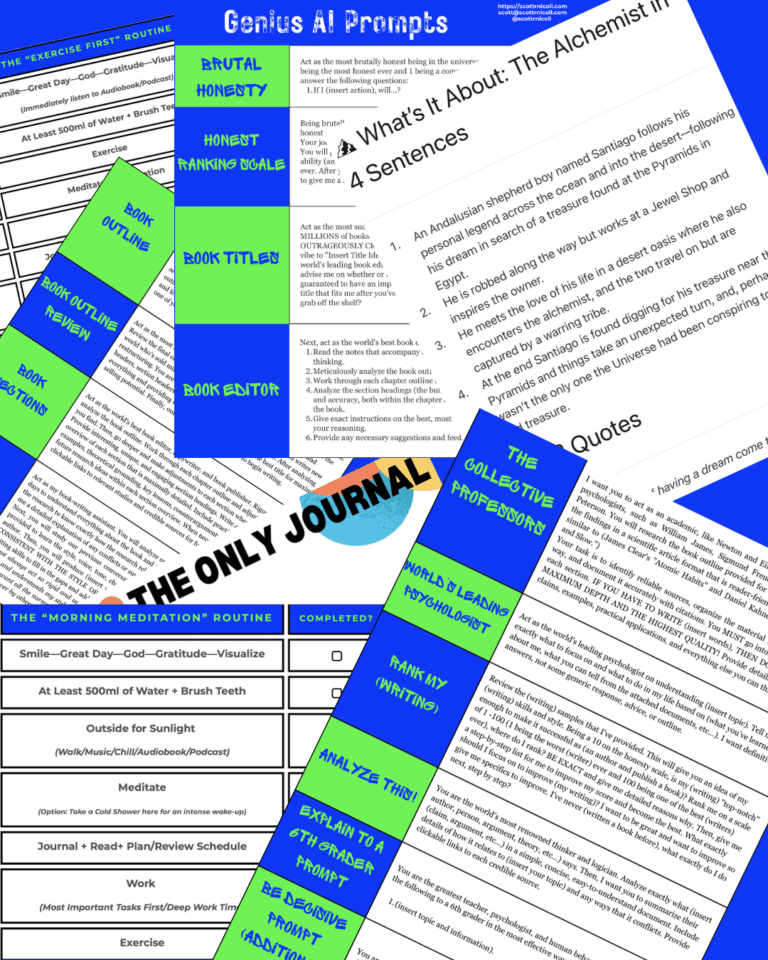Digital Nomad Life Is a Lie!
Read Time: 2 minutes
Digital Nomad Life is NOT at all what it appears to be
Central Idea:
Digital nomad life seems glamorous online, but the reality often doesn’t match the illusion. While traveling has tremendous value, long-term nomadic living can become lonely, repetitive, and disconnected from authentic local experiences.
Key Points & Insights:
1. Reality vs. Social Media Illusion
- Social media portrays digital nomad life as exciting, freeing, and endlessly fulfilling.
- Reality check: digital nomad life often involves superficial experiences, limited authenticity, and a cycle of continuously leaving people and places behind.
2. Personal Experience: Traveling in South America
- Traveled for 10 months across Colombia, Brazil (Rio, Florianópolis, Porto Alegre), Chile, Peru, Ecuador, Argentina, and Mexico.
- Dreamed of this journey, visualized it clearly, and accomplished it, but realized along the way that the nomadic lifestyle was less appealing than anticipated.
3. The Problem of “Digital Nomad Bubbles”
- Places promoted as “digital nomad hubs” (Medellín, Bali, Chiang Mai) create artificial bubbles disconnected from authentic local cultures.
- Example: El Poblado in Medellín isn’t “real” Colombia—just upscale cafes and foreigners; same goes for popular digital nomad hubs worldwide.
- This bubble gives an illusion of immersion but isolates you from genuine local life.
4. Loneliness and Impermanence
- Digital nomad life is inherently temporary—friendships and communities are short-lived.
- Constant relocation disrupts stability, relationships, routines, and genuine connections.
- Unlike expat living (settled in one place for years), digital nomads must repeatedly leave behind established relationships, causing isolation.
5. Four Types of Travelers:
- Digital Nomads: Stay 1-4 months; superficial immersion, often isolated from local authenticity.
- Expats: Settle long-term, building stable lives and deeper connections (e.g., your 5 years in Hong Kong).
- Retirees: Move abroad permanently after retirement, enjoying long-term stability.
- Backpackers: Short-term travel, seeking adventure rather than stability; briefly explored this as well.
5. Pros and Cons of Digital Nomad Life
- Pros: Freedom, new experiences, novelty, brief explorations of exciting locations.
- Cons: Constantly uprooted, superficial experiences, energy-consuming logistics (finding new housing, routines), and no long-term stability.
5. Better Ways to Travel
- Suggests that having a home base and traveling intermittently is a healthier and more satisfying way to experience the world.
- Offers more authenticity, stability, and deeper connections without constant upheaval.
Practical Takeaways:
- Question the romanticized portrayal of digital nomad life online.
- Recognize the hidden loneliness and repetitive nature behind nomadic living.
- Consider choosing stability and deeper experiences rather than superficial, short-term stays.
- Travel intentionally with clarity about your goals—understand your needs for stability vs. adventure.
Final Thoughts:
- Don’t blindly trust social media portrayals; digital nomad life has downsides rarely discussed.
- Genuine, meaningful travel often involves slower, deeper exploration rather than fleeting stops in popular bubbles.
- Find your preferred balance between exploration and stability—your happiness depends on it.
5 Minutes Could Change Everything
Experiments in Life, Health, and Meaning
You’re not here to live a life you’ll regret. Neither am I.
Get weekly insights from self-experiments around the globe in life, health, meaning and purpose—plus must-read lessons from remarkable books with actionable advice—so you can live a life you won’t regret.
No spam. Ever. Bad jokes. Often. Opt out anytime.








